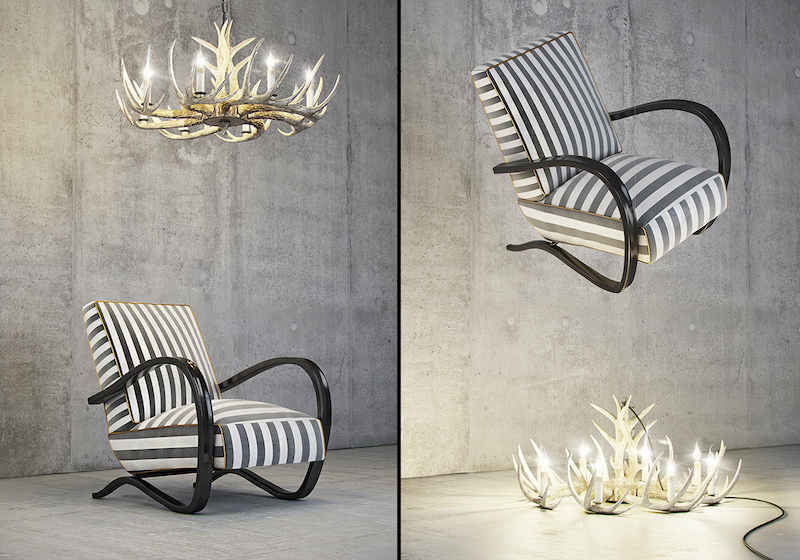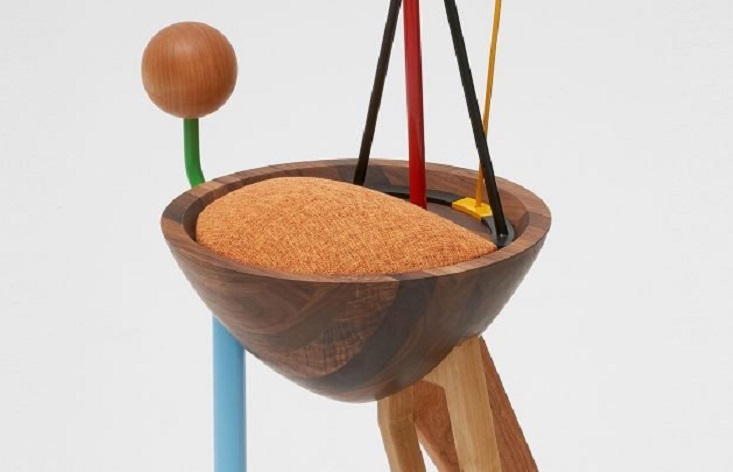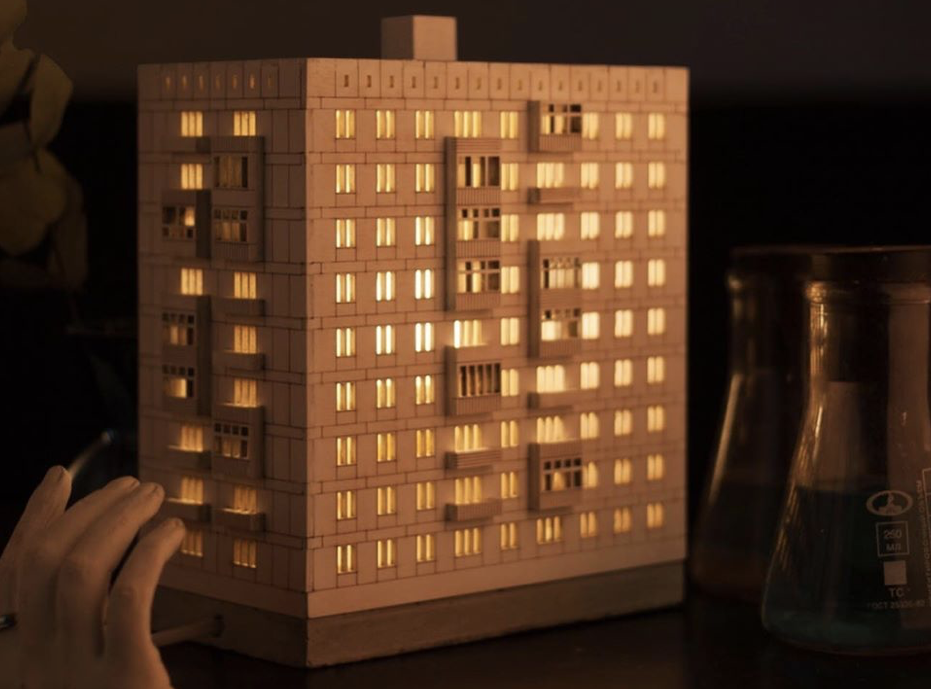Halabala hullabaloo: the 1930s Czech furniture designer vintage buyers can’t get enough of

Before IKEA, there was Halabala furniture. Now modern designers can't get enough of one man's take on mid-century Czech interior design.
When I moved into my great-grandmother’s apartment in Prague, I acquired all of its turn-of-the-century furniture. From the couch to the guest bed, the pieces were characterised by their glossy, walnut-veneer and huge size, which in Czech is referred to as ‘masiv’. Though beautiful, most of the furniture was made from stiff material, which was not comfortable to sit on. I wanted something plush that I could sink my body into. It was on a quest to find new furniture befitting the apartment’s old-style that I came across Czech furniture designer, Jindřich Halabala. It’s a name hard to forget.
Halabala is best known for his design contributions at the United Arts & Crafts Factory, or United UP: one of the most influential furniture companies in Czechoslovak history. As head of the architectural studio in 1930, and then later as plant director until 1946, Halabala created furniture that filled the interiors of Czech and European households at the time. In the decade after the fall of communism, many people chucked Halabala originals out of their homes in favour of foreign-made imports, which had previously been unavailable behind the Iron Curtain. But today, with a new collective mania for mid-century modern decor, his designs are once again en vogue — and in high demand on the vintage market.
In the decade after the fall of communism, many people chucked Halabala originals in favour of foreign-made imports. But today his designs are once again en vogue
To what can we attribute the revival in interest in Halabala and his work? Perhaps it is the simplicity of the designs. At Modernista, a Czech furniture company with an exclusive licence to reproduce Halabala designs, David Kmínek, head of furniture, attributes the furniture’s continued popularity to Halabala’s mixture of artistic styles. “There is a fusion of style in his work, with Functionalism and Art Deco influences, and Halabala mixed them in a way that you can feel both trends in his furniture,” says Kmínek. “It’s not pure Functionalism like in Germany, or pure Art Deco in France or Belgium, and it’s also different from what you find in Vienna, where you see more decorative pieces. He mixed all these trends together and came out with his individual line of furniture that looks very modern.” Among style influences like Czech Cubism and Art Deco, Halabala was also greatly inspired by the Bauhaus aesthetic, which sought to combine fine art aesthetics with everyday function. This philosophy is central to his work and can be seen in his commercially successful modular series H and E.
Besides his modern designs, sheer demand is driving interest. Previously, shopping for antiques required driving to various warehouses located outside of cities, limiting accessibility and supply. Today, restored retro furniture can be found online, but there is competition among buyers. When Anna Hájková Pavlů co-founded Banannachair studio, a business that buys and restores retro Czech furniture, she found that she had to create her own contacts in order to find armchairs available for restoration. Today, she and her sister sell the refurbished pieces online, as well as out of a showroom in Liberec.
“There is a great demand for Halabala furniture and for other mid-century pieces. We restore mainly armchairs, but people in the Czech Republic often also want his spider tables. Flower tables and wardrobes by Halabala are also extremely popular,” says Pavlů. Among Banannachair’s best sellers is the H-269 Lounge Chair, distinguished by its curved wooden armrests. Pavlů tells me that the restoration process for the armchairs is laborious and involves completely dismantling the components, refinishing the wooden armrests, and reupholstering the seat in a traditional method using jute straps, springs, and African grass. In spite of everything, Pavlů finds that the signature armchairs are highly sought-after and that people are willing to pay a premium for the labour involved.
Pavlů believes the renewed interest in Halabala is also because of the quality associated with United UP products. As a designer, Halabala was concerned about compromising on product quality. Or, as he said in a once classic quote, “a chair is the testing stone for any artist, constructor, and carpenter. Therefore, it can never become an artistic horror.” Simply put, he believed that the true test of a designer was to ensure that the most basic piece of furniture — the chair — was fabricated with physical integrity. To that end, most of his works at United UP utilised solid woods and metals, which last much longer than the composite wood often used in furniture today. These refurbished pieces do sometimes still require treating for damage, like holes created by woodworms. But ultimately, customers are willing to pay for furniture that stands the test of time. “People do not want no-name furniture; they look for something special and this is affordable design,” Pavlů tells me.
Yet it is somewhat ironic that modern buyers associate Halabala furniture with durability and distinctiveness. In his day, the designer was in fact best known for pioneering a mass-market approach to furniture. Halabala received his design education at a time when a new wave of Czechoslovak nationalism spread throughout the country after the end of the First World War and the Austro-Hungarian Empire. In many regions in the newly-formed Czechoslovak Republic, expanded connections between suburban municipalities created a sudden increase in population growth in cities, and a need for residential accommodation. At the same time, where architectural design had previously been guided by Viennese influences, like that of Art Nouveau, designers became inspired to create new styles representative of a uniquely Czechoslovak identity.
Many designers who led this nation-focused movement came out of the Prague School for Applied Arts, including Halabala, who studied interior design from 1922 to 1926. During this time, Halabala was also first introduced to the United UP plant in Brno and the company’s founder, Jan Vaněk. The company initially fulfilled custom orders, but Vaněk soon realised the potential in scaling up the production of standard pieces sold at reasonable prices. By the time Halabala took over design in 1930, Vaněk had left the company and Halabala became responsible for strategy. He and his team understood that to make furniture that appealed to the masses, the style had to be simple and customers also had to be able to envision what the items would look like in their apartments and homes. So, much like in today’s IKEA showrooms, Halabala had all United UP storefronts made up to look like fully-furnished interiors.
He and his team understood that to make furniture that appealed to the masses, the style had to be simple and customers also had to be able to envision what the items would look like in their apartments and homes. So, much like in today’s IKEA showrooms, Halabala had all United UP storefronts made up to look like fully-furnished interiors.
Halabala also understood the importance of advertising. Under Vaněk, United UP launched the now defunct magazine Bytová Kultura, or Apartment Culture, that promoted sales by showcasing modern apartment design. Halabala ramped up advertising and even co-published a book titled How to Arrange an Apartment Cheaply, Modernly, and Hygienically. Of course, not all design credit can be attributed to Halabala, as he had many others working with him at United UP. However, it was largely his leadership that helped make the company one of the largest furniture manufacturers in Europe.
A vintage ad for Halabala furniture. Image courtesy of the author
Despite being one of the most influential furniture designers to hail from the Czech Republic, there is still much we do not know about Halabala and his work at United UP. As Kmínek explains, much of the information that once existed in archives has since been lost. “We have very little detailed information because, after the war, there were floods in Moravia close to the company building, and the original catalogues and contracts – all these materials — were lost forever,” he says. “There were also floods in Prague in 2002 that affected the UP archives.” Much of what is known comes from Halabala himself. He was an educator and prolific writer later in his life, lecturing on design and routinely publishing articles in various journals and the press. He passed away in 1978 in Brno, where his career began.
Yet while many documents simply washed away, Halabala’s pieces have stood the test of time. “Many people have this furniture as a heritage from their parents or grandparents, so it has special value for them and they want to keep it in the family,” Pavlů tells me. She has a point. Although the appetite for Halabala’s works is driven by popular demand for modern and quality vintage furniture, his pieces are also a touchstone to pre-communist, Czech heritage. For all my scouring for furniture on the internet, I came to understand that the true value of my great-grandmother’s old furniture is rooted in what it represented to me. Sure it may be uncomfortable to sit on, but it is as if the very cushions of the couch contain the memories of her and the times we once sat together watching dubbed episodes of Midsomer Murders. Those memories ground me in my family history, just as Halabala originals allow Czechs, young and old, to derive a sense of nostalgia and pride in the progress that their homeland has made over the last 100 years.


